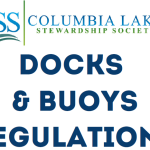Why Did Explorer David Thompson Go Against the Flow?
Over the Rockies to the Columbia River
David Thompson wore many hats while working with the North-West fur trading company. He explored, surveyed, mapped and observed much of western Canada as an explorer and partner with North-West. The following summary is based on J.B. Tyrrell’s 1916 work, “David Thompson’s narrative of his explorations in western America, 1794-1812. Tyrrell, a geologist with the Geological Society of Canada, utilized many of Thompson’s measurements and observations to assist him in his geological work throughout western Canada in the late 1880s and early 1900s. Columbia Lake Stewardship Society (CLSS) wanted to know if David Thompson made any observations of the geology and landscape in the Canal Flats area. This might lead to a better understanding of Columbia Lake’s and Kootenay River’s water flows.
Thompson’s first trip west over the Rocky Mountains departed present day Rocky Mountain House, Alberta on May 10, 1807. He travelled with his family and crew up the Saskatchewan River until they could paddle no further, then travelled by horseback and finally on foot. They eventually crossed “over the height of land” or highest point, through Howse Pass, and then downstream adjacent to the Blaeberry “Torrent” (River). The crew reached the Columbia River in the vicinity of present day Blaeberry, BC on June 30, 1807.
They camped there and built canoes in order to continue their trip. Thompson then instructed his crew to make their way south and upstream (not downstream). His group eventually camped on the shores of lower Columbia Lake, now called Lake Windermere. Here they built Kootenai House and explored the area for five years. Thompson made several trips east with furs, expeditions survey details and maps of the area. During these five years, from Kootenai House, he travelled downstream on the Columbia River only a few times. However, he did explore the Columbia River from its mouth and in 1811 travelled upstream through the Arrow Lakes, past Revelstoke to complete his exploration of the Columbia River. Many of Thompson’s travels were from Kootenai House to the Canal Flats area and then south into the United States via the Kootenay River.
McGillivray’s Portage – Canal Flats
On April 20, 1808 Thompson canoed upstream from Kootenai House and reached McGillivray’s Portage (Canal Flats). He then made his way down the Kootenay River (which he called Flat Bow or McGillivray’s River) and explored Montana and Idaho as far as Bonner’s Landing before returning to Kootenai House for the winter. Subsequently, he crossed over this portage several times from 1809 to 1811. Thompson descended the Columbia River in the fall of 1811 and travelled over the Rocky Mountains via Athabasca Pass. He then made his way to Montreal on the spring of 1812 where he resided to the end of his days, never to cross the Rocky Mountains again.
During this initial trip in 1808 when his party reached the Columbia River, why did Thompson travel upstream versus downstream? Furs might have been more abundant as one went further north. Did he have a sixth sense why this major river flowed north and not south? The answer is maybe he knew of the other river that flowed south (Kootenay River) as his First nations guides certainly knew of the river. Two of his party had previously made it over the mountains to the Columbia River, and crew member Jaco Findlay later explored the area.
Did Thompson make any notes on the geology, landscape or any survey data as he travelled over McGillivray’s Portage? As we all know, Columbia River is an anamoly; it lies between the Purcell Mountains to the west and the Rocky Mountains to the east, flows north within the Rocky Mountain Trench for approximately 280 kms before it takes a 90 degree turn to Mica Creek then flows south. By the time the Columbia River reaches Nakusp (approximately due west of Canal Flats) it has travelled approximately 575 kms. Whereas the Kootenay River at Canal Flats is 1-2 kilometres from Columbia Lake but flows due south, without taking the semi-circular route that the Columbia River does.
As a hydrogeologist (water resources and geology) I wonder what David Thompson observed 200 years ago as he explored the area, especially Columbia Lake area and McGillivray’s Portage.
The Last Ice Age
We need to go back longer than 200 years to understand the Columbia River, back to the Geological Time Scale and the Quaternary Period, also known as the glacial age. Prior to glaciation (about 2 million years ago), the landscape consisted of upland mountain areas, dissected plateaus and alluvial plains, much like present day northern Yukon Territory (Fulton, 1989 – Quaternary Geology of Canada and Greenland). Glaciation occurred throughout the Quaternary Period, which started about 1.65 million years ago and consisted of successive periods of cooling and warming – of glacial advances and retreats. The last glacial events occurred in western Canada’s Cordillera region approximately 80,000 to 10,000 years ago. Yes! climate change was occurring then too, and with that came melting and retreat of the glacial ice sheets and associated catastrophic flooding events. These events changed the Columbia Valley and the Columbia River and are responsible for much of the landscape we see today.
Imagine you were there, in Canal Flats, as the last glaciers were melting and receding to the north. Huge glacial melt waters channels were being created and spectacular amounts of meltwater cascaded down valleys of the Purcell and Rocky Mountains. Rivers (and in particular the Kootenay River) were cutting their channels and overflowing with debris; boulders, rocks, gravel, sand, silt. Finally, a built-up area formed and only a few metres in elevation separated the Kootenay River from the land to the north. Additional flooding of the Kootenay River may have added to, or reduced, this built-up area. Regardless of how and when it formed, this particular slightly northward sloping landscape existed then and exists today.
During the Quaternary Period, it would appear that the volume of water flowing south along the Rocky Mountain Trench had decreased and that no significant river channel cut through from present day Columbia Lake and connected to Kootenay River; if so, there would be no ponded water or the formation of Columbia Lake (it would have drained into the Kootenay River). This had not happened and therefore we have the situation we see today: the Kootenay River flowing south; Columbia Lake and the Columbia River flowing north.
Going Forward
Back to today and many questions exist. Does the sand and gravel aquifer present beneath Canal Flats hydraulically connect the Kootenay River to Columbia Lake at some times of the year (spring runoff)? Where in the Canal Flats area does groundwater flow to the Kootenay River versus to Columbia Lake? What volume of groundwater flows into Columbia Lake annually? Not enough is known of the surficial geology and groundwater resources in this area. We do know that the aquifer beneath Canal Flats is an important water supply and is hydraulically connected to Columbia Lake.
CLSS would like to determine the influence that the sand and gravel aquifer has on Columbia Lake. That is:
How fast does groundwater travel?
In what direction (s) does it flow throughout the year?
What volume of groundwater is stored in this aquifer?
With that in mind, CLSS is working on a plan to find out some of these answers. We will post more information in the spring 2018.
Meanwhile, stay warm this winter.






